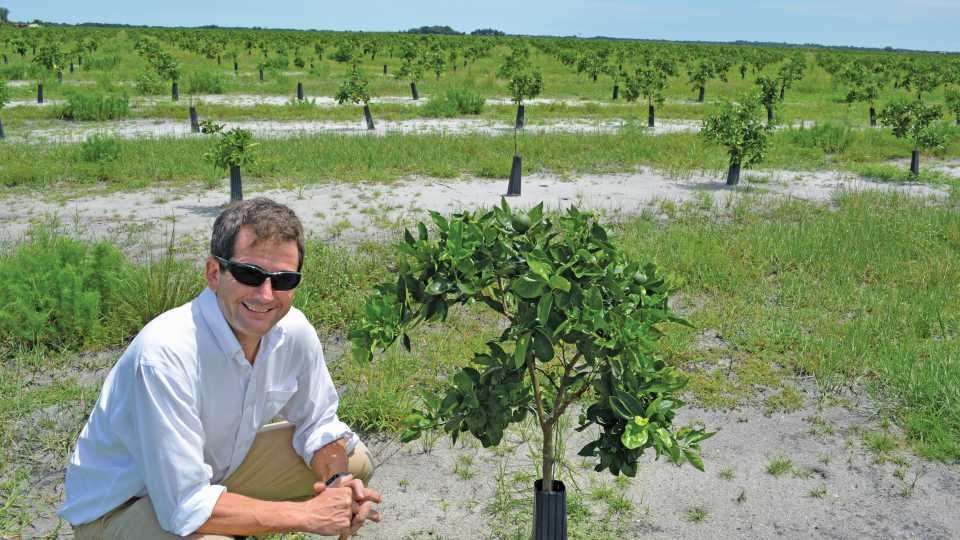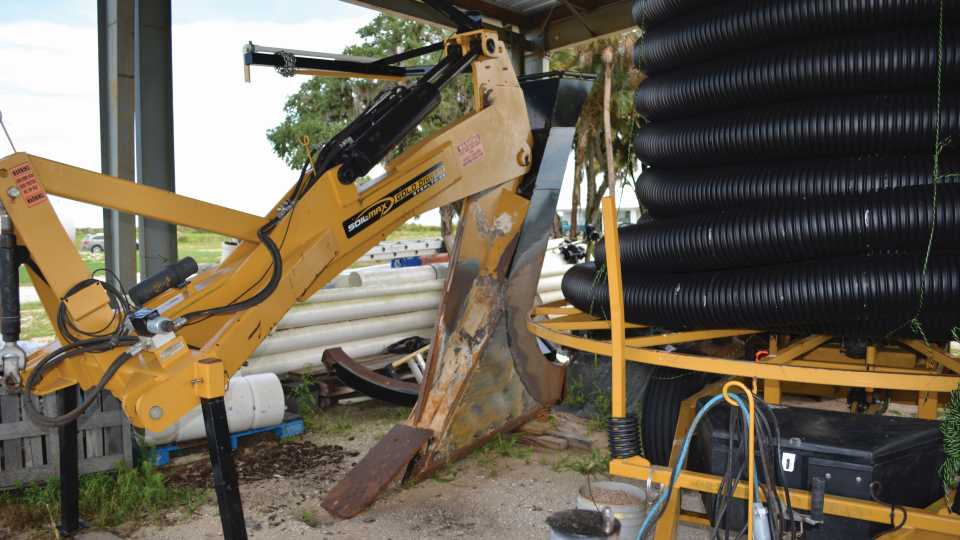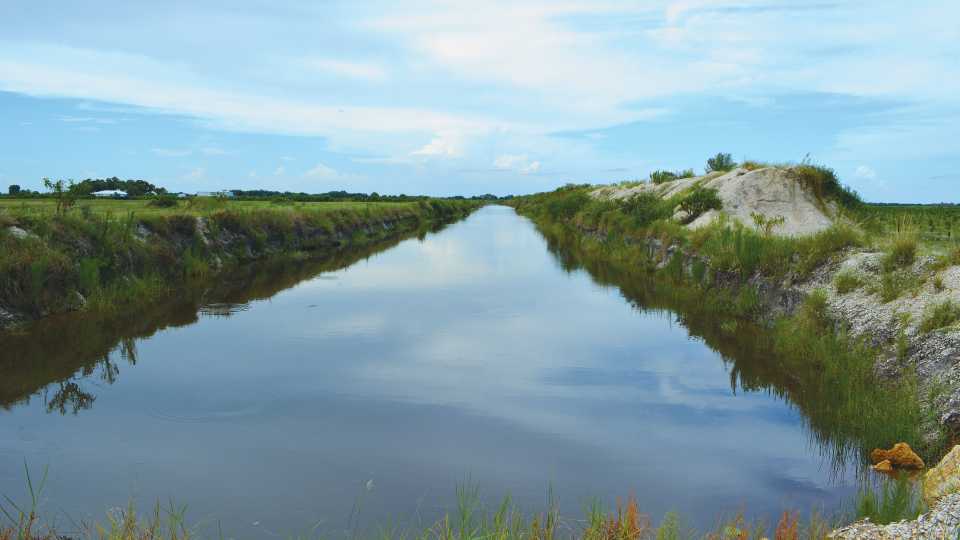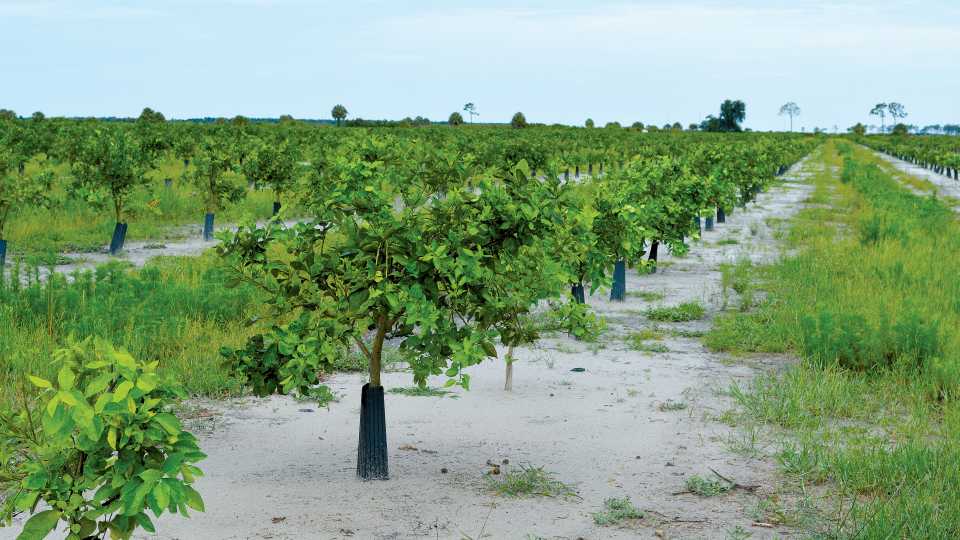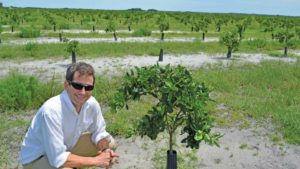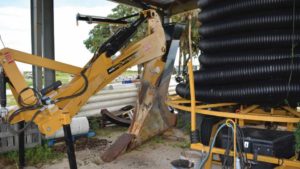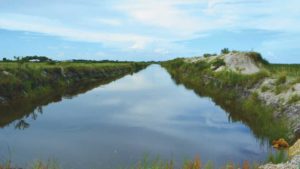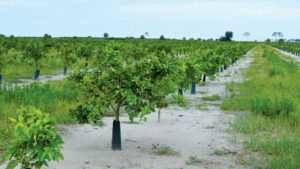The New Scoop to Keep Citrus Roots Healthy
When citrus greening was first confirmed in Florida in the mid-2000s, most growers didn’t fully appreciate the devastation and massive change it would bring to the state’s signature crop. The Paul family might have had an early appreciation of those challenges, however. After all, Jack Paul II was among the first to find the disease’s vector, the Asian citrus psyllid, in a grove in 1998. He alerted family and friends that it was a serious find and meant trouble for the future.
John Paul III carried on the growing tradition, along with his sister Julie Obney, and Frank Vega, after Jack passed away in 2014. Paul Citrus Inc. now has about 2,400 acres of groves mostly in Highlands and Hendry counties.
In 2017, Paul started a new, 550-acre planting on a large tract of land in DeSoto County where he implemented some newer thinking on tree densities and irrigation.
“My dad really wanted to plant on this land, but he was worried about citrus greening, so he held back,” Paul says. “My sister and I believed we could make it work and started planting in the spring right before Hurricane Irma. We have been recovering ever since and think we are getting trees on the right track after two seasons of good management after the storm.”
The trees planted before the storm were laid down by the winds and had to be stood up and rehabbed, but Paul expects they will produce about 50 boxes per acre next season.
Root Focused
As greening spread and growers and researchers developed programs to try to keep trees productive, it eventually became clear that healthy roots are the foundation of tree health in an HLB environment. The Pauls arrived at this conclusion early on.
“We were having this debate within our family about why greening spread so quickly once it was first confirmed,” Paul says. “Were the roots dying back only because of greening, or was it in part due to the sporadic droughts that were occurring during that time? We believed some of the root dieback might be due to the droughts.”
Paul began looking at irrigation methods that could better address root health and counter future droughts. One approach the family decided to try was subsurface irrigation.
“In the old days, it was all about water on and water off of the groves, especially in the Flatwoods,” Paul says. “With subsurface irrigation, we are trying to retain as much water as we can and keep those roots as moist as possible — not just where the emitters would be on microjets.”
The 550-acre planting in DeSoto County is irrigated using a subsurface, closed-seepage system fed mostly by three large tailwater recovery ponds. With the grove’s soil consisting of 85% Immokalee sand, water doesn’t stick around long from rainfall or with more traditional irrigation methods. According to a study by the St. Johns River Water Management District, the subsurface irrigation also saves water, cutting usage by 45% from evaporation losses alone.
“We are seeing more roots and improved tree health where we have the subsurface irrigation,” Paul says.
The 4-inch tiles are laid 36- to 40-feet apart depending on row spacing at about 3 feet below the surface Water is pumped through the tiles from the three tailwater collection ponds that are positioned in a way to recycle water being applied to the groves as it flows down the flat, but slightly contoured land.
The land where the new groves are planted has a solid hardpan at about 5 feet below the surface. Paul says this is important because the subsurface irrigation does not perform as well on a more porous hardpan.
Weather stations and field sensors are installed in the groves to monitor conditions to help manage irrigation. Paul utilizes Ranch Systems technology to track soil moisture, salinity, and temperature. The system monitors weather conditions as well.
“The system helps our guys manage irrigation, because it can be really hard to determine the best irrigation timing on these types of soils,” Paul says.
The subsurface irrigation is more costly to install, but Paul applied for and received cost-share dollars from the South Florida Water Management District to fund parts of the project (not including the tiles).
“The materials cost more here than areas where the practice is more common,” he says. “But we believe we will see a return in better root and tree health, and more productivity over time.”
Higher Density Plantings
In the new grove, Paul says higher densities are being used to push trees into production more rapidly. Valencia, with some grapefruit and other specialty varieties, comprise the majority of the 550 acres. Densities vary from 276, 303, and 550 trees per acre.
“We have a planting of 550 trees per acre in LaBelle that picked 240 boxes per acre in the fourth year,” Paul says. “We like that model.”
Several rootstocks are being tried in the grove. US-897, US-942, and C22 are among those, and they have dwarfing qualities to provide more compact trees in the higher-density plantings.
Paul is a believer in allowing natural systems to run as uninterrupted as possible. He plants cover crops between rows to provide mulch to build organic matter and support microbial communities in the soil.
“We have reversed our mowers to sling mulch back under the trees,” he says. “We have a very light herbicide program. We keep chemical applications as light as possible on the farm.”
Paul says his fertilizer program has returned to a more traditional approach in recent years, partly for economic reasons to recover from the hard hit delivered by Hurricane Irma. The family’s groves in Hendry and Highlands counties lost up to 90% of their crop from the storm.
“We were pretty heavy into liquid fertilizer for a few years but have moved back to a combination of dry and liquid applications,” he says. “We are applying the dry fertilizer in February, May, and August based on the trees’ need and if we see flush coming.
“We also have noticed, on the subsurface irrigation groves, the dry fertilizer seems to be pulled into the soil more efficiently.”
Up to four applications per year are made for psyllid control in the groves. That is on the lighter side compared to some growers, but Paul believes it helps maintain beneficial insect populations.
“My father really believed the more pesticides you use, the more you throw everything out of whack,” he says. “And, we have seen that with some spikes in other pests and resistance developing.”
Incentive Encourages Planting
Most of the acres in the new planting in DeSoto County was incentivized by Florida’s Natural Growers planting program. The program provides growers with a $10 per tree loan for planting. If the grower sticks with the juice processor for 10 commercial crops, the loan is forgiven.
According to Florida’s Natural, the incentive has been very successful. To date, more than 1.4 million trees have been planted because of this program.
Optimistic Outlook
Paul believes in the future of Florida citrus but says it will take innovation and growers sharing ideas to ensure success.
“Most of what we are doing in our groves, I have learned from other growers,” he says. “All of us need to continue to come together and share ideas.”
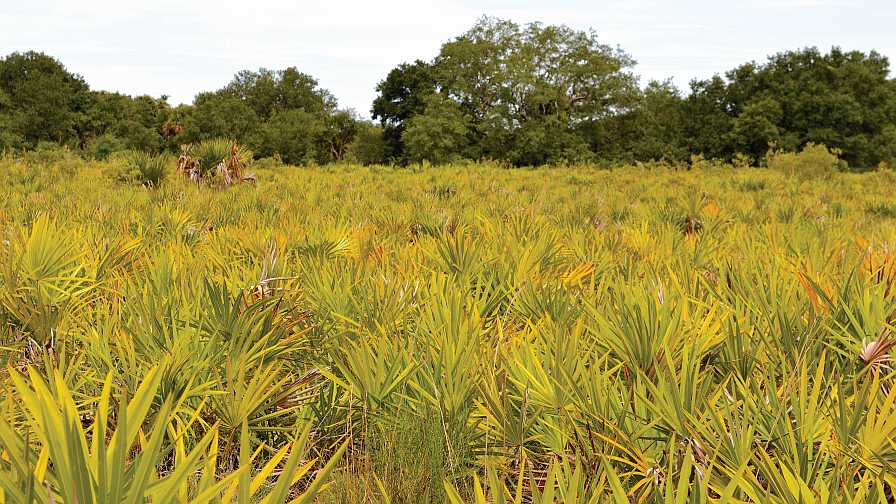
A wild saw palmetto field on John Paul’s Desoto County property. Paul believes it could become a profitable alternative crop.
Photo by Frank Giles
Experimenting with Alternatives
Paul says he is inquisitive by nature and open to experiment with alternative crops. In 2018, the state began to enforce rules regulating the harvest of saw palmetto berries to get a better handle on what had become an almost black-market trade marred by trespassing and dangerous working conditions for berry harvesters. The berries are used to make the popular dietary supplement for prostate health. Paul and colleague Ronnie Taylor thought it might be profitable to manage a 40-acre wild palmetto field like a cultivated crop on his Desoto County property.
“We have not done much with it yet, because we are still in recovery mode after the hurricane,” Paul says. “But in the coming year, we are going to look at applying some fungicides and other management practices on the plants to see if we can increase their productivity.
“There is a big market for these berries, and harvests are not allowed on state-owned land. As more land is developed, the availability of berries will become more scarce. It could be a profitable alternative crop.”





